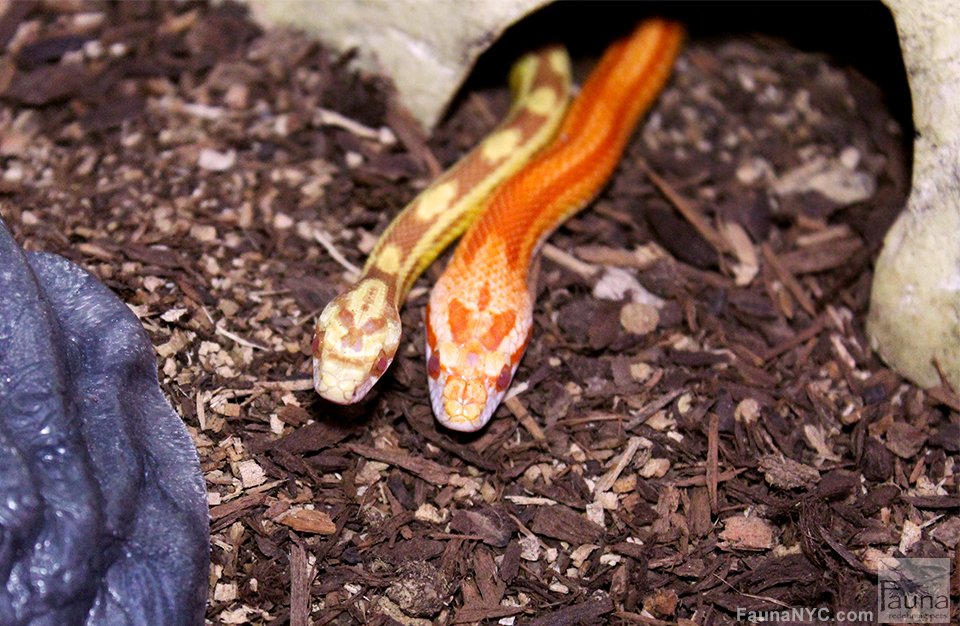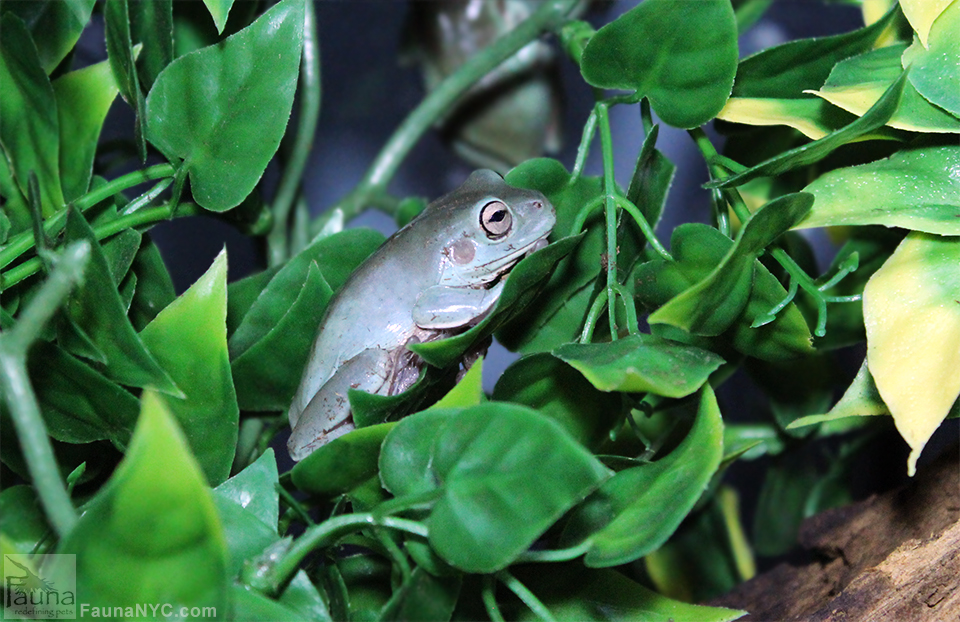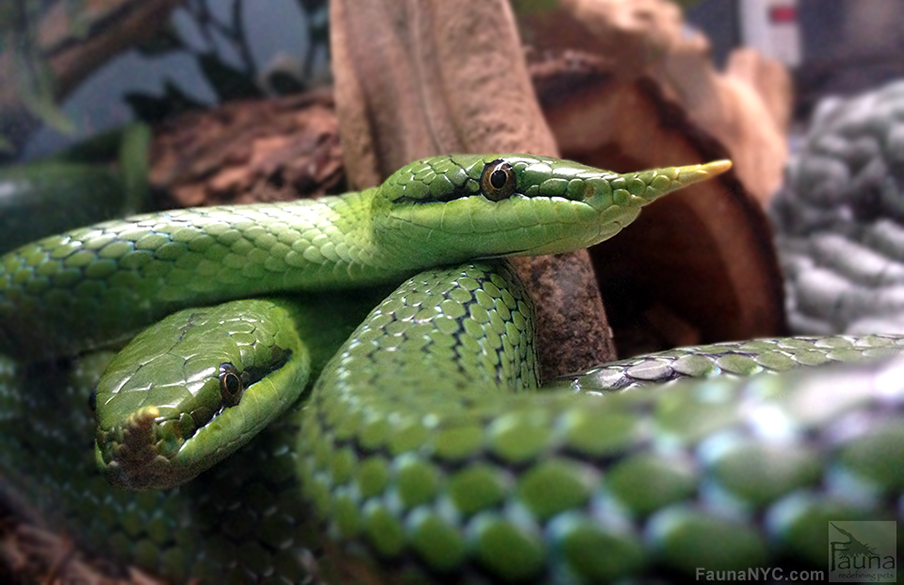
by admin | Feb 27, 2015 |
Rhino Ratsnake (rhynchophis boulengeri) Fauna ReptilesReptiles Home Featured in Reptiles Snakes Lizards Amphibians Tortoises Reptile Boarding Rhino Ratsnake (rhynchophis boulengeri) The aptly named rhino ratsnake (rhynchophis boulengeri) is characterized by a soft horn-like appendage on the end of its nose, giving it a rhinoceros-like appearance. Like most ratsnakes, they eat small rodents, and can grow in size to nearly five feet. They are also sometimes called Vietnamese longnose snakes or “green unicorns”. This rhino rat snake (Rhynchophis boulengeri) is not a ghost. You can tell by it’s cloudy, blue eyes that it is ready to shed. In a few days, she will be a beautiful shade of green that will once again allow her to camouflage in the...
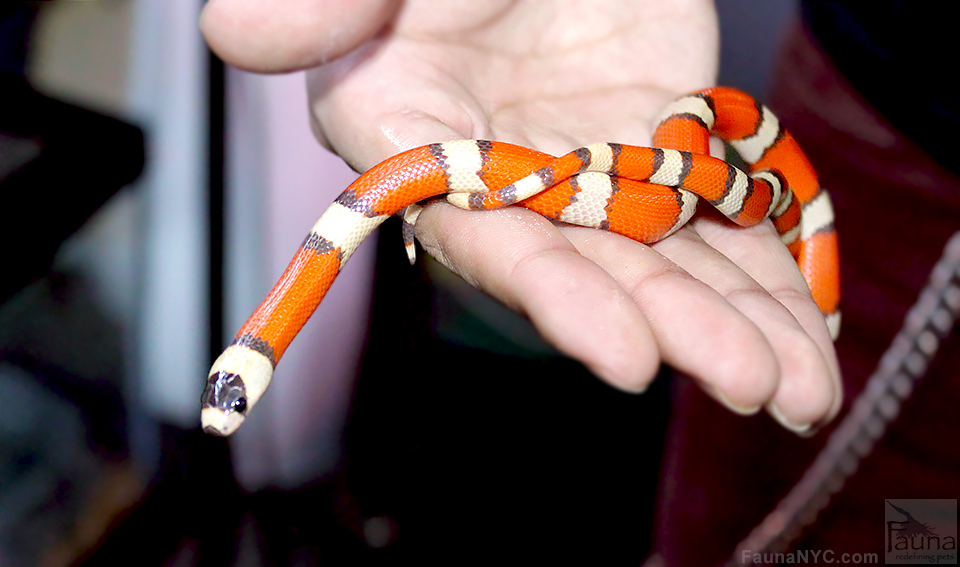
by Fauna | Feb 17, 2015 |
Hypo Honduran Milk Snake Fauna ReptilesReptiles Home Featured in Reptiles Snakes Lizards Amphibians Tortoises Reptile Boarding Hypo Honduran Milk Snake We have some new Hypo Honduran Milk Snakes at Fauna! Stop by the store and talk to our specialists to see if one is right for you....
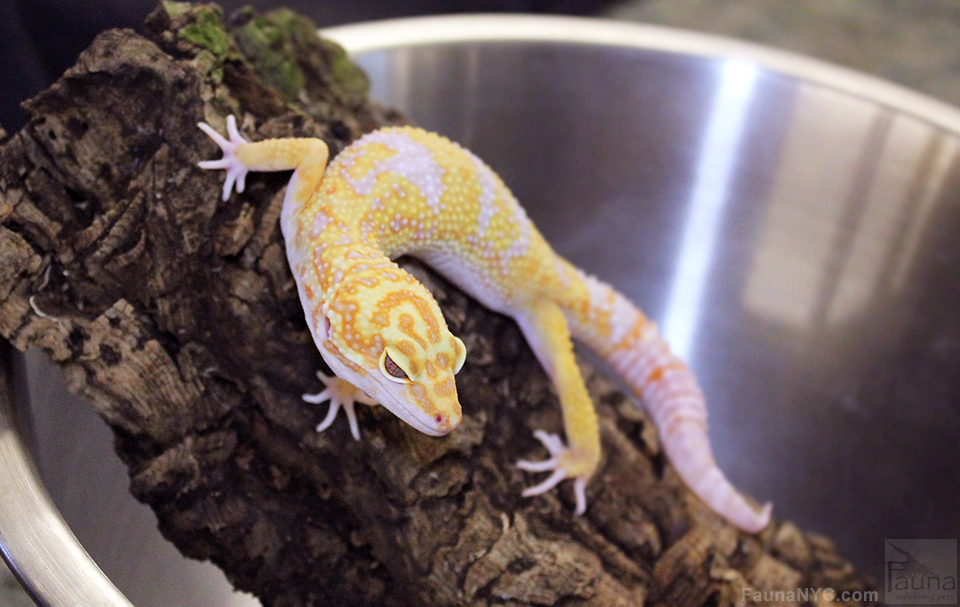
by admin | Feb 15, 2015 |
Leopard Geckos (Eublepharis macularius) Fauna ReptilesReptiles Home Featured in Reptiles Snakes Lizards Amphibians Tortoises Reptile Boarding All about the leopard gecko Leopard geckos are one of the most popular pet lizards due to their manageable size and friendly temperament. Nearly all leopard geckos available in the US have been captive raised for multiple generations, making them not only an an excellent choice for the beginner, but also an environmentally responsible decision. Since they are widely captive raised and have no set breeding season, leopard geckos are readily available year round. Leopard geckos are one of the largest gecko species, reaching around 8 or 9 inches in length. The wild type, aka “normal” leopard gecko, is yellow with brown-black spotting as an adult. Juveniles tend to have striped patterns that fade with age. Unlike other geckos, leopard geckos do have eyelids. They are also completely terrestrial, lacking lamellae on the toe pads that allow other gecko species to walk up vertical surfaces. The average lifespan of a leopard gecko is around 12-15 years, although some have reportedly lived more than 25! Given their longevity, much thought is in order prior to deciding to purchase a leopard gecko. What kind of home do they need? The most common type of housing for leopard geckos is an aquarium. The minimum size should be a 20 gallon long tank, which can house one to two geckos. Ensure that you only have one male per enclosure, as males are very territorial and will fight each other. Although leopard geckos are nocturnal and many believe there is no benefit from UVB lighting, we always...
